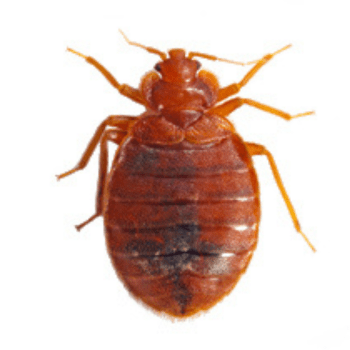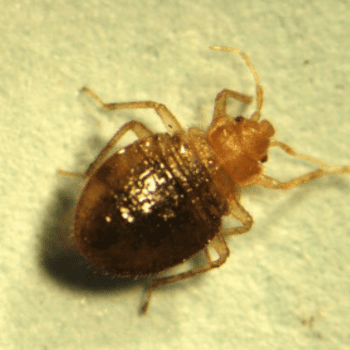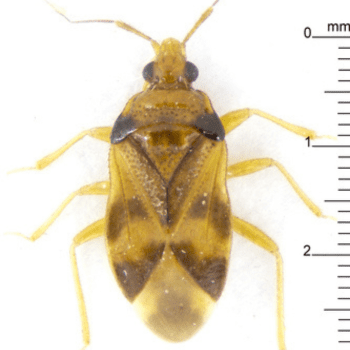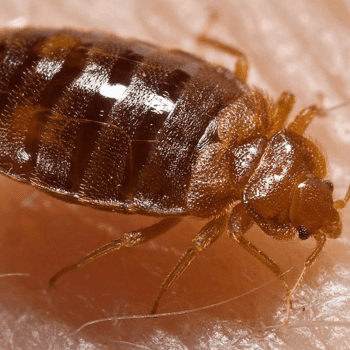Bedbugs
Bedbugs are small, blood-feeding insects belonging to the family Cimicidae, with the two most common species being Cimex lectularius (common bedbug) and Cimex hemipterus (tropical bedbug).
Call Us when you Need Help!
Bedbugs
Bedbugs are small, blood-feeding insects belonging to the family Cimicidae, with the two most common species being Cimex lectularius (common bedbug) and Cimex hemipterus (tropical bedbug). Notorious for their ability to thrive in human environments, bedbugs have become a significant public health concern due to their capacity to cause discomfort, allergic reactions, and psychological distress among affected individuals. Although they do not transmit diseases, their presence can result in severe emotional and social repercussions, as well as financial burdens associated with eradication efforts and property damage.Characterized by their flat, oval shape and reddish-brown color, adult bedbugs typically measure between 4 to 5 mm in length. They are primarily nocturnal, preferring to feed on the blood of humans and other warm-blooded animals while hiding in cracks and crevices near sleeping areas.The bedbug life cycle involves several stages, from egg to nymph to adult, with a female capable of laying hundreds of eggs over her lifetime, which contributes to their rapid population growth and makes infestations difficult to control.
Infestations are often identified by distinctive signs, such as bite marks, fecal spots, shed skins, and the presence of live insects. Early detection is crucial for effective management, and various treatment strategies—both chemical and non-chemical—are employed to combat bedbug populations. Integrated Pest Management (IPM) approaches, emphasizing monitoring, sanitation, and community cooperation, have proven effective in minimizing outbreaks and preventing re-infestation.While bedbugs are not known to transmit pathogens, their bites can lead to a range of health issues, including allergic reactions and secondary infections. The psychological impact of bedbug infestations is significant, with many individuals experiencing anxiety, sleep disturbances, and social stigma associated with these pests. Thus, addressing bedbug issues encompasses not only pest control but also mental health considerations, highlighting the importance of comprehensive strategies in dealing with this pervasive problem.
Common Characteristics BedBugs in India
Notorious for their ability to thrive in human environments, bedbugs have become a significant public health concern due to their capacity to cause discomfort, allergic reactions, and psychological distress among affected individuals. Although they do not transmit diseases, their presence can result in severe emotional and social repercussions, as well as financial burdens associated with eradication efforts and property damage.
Biology of Bedbugs
Bedbugs are small, oval, and flat insects measuring approximately 4 to 5 mm in length and 1.5 to 3 mm in width.They are typically mahogany-brown in color, but their appearance changes to a deep purple or red after feeding on blood. Adult bedbugs are distinguished by their needle-like mouthparts, which they use to pierce the skin of mammals and birds to draw blood.Newly hatched nymphs are almost colorless, while engorged nymphs display a reddish hue.
Life Cycle
The life cycle of bedbugs consists of six stages, including egg, nymph, and adult stages. Under favorable conditions, a female bedbug can lay between 200 to 500 eggs throughout her lifetime, with maximum egg production occurring when temperatures are above 21°C (70°F).Bedbug eggs are white, oval-shaped, and about 1 mm long, coated with a sticky substance that allows them to adhere to surfaces. The eggs typically hatch within 10 days at optimal temperatures, although hatching can take up to 28 days in cooler conditions.
Feeding Behavior
While humans are the preferred host for bedbugs, they will also feed on various warm-blooded animals, including rats, mice, dogs, cats, and birds. Bedbugs generally feed at night but can venture out during the day if hungry. Feeding sessions can last from 3 to 12 minutes, during which the insects inject saliva that can provoke allergic reactions in some individuals, leading to swelling and itching.Notably, bedbugs do not bore into the skin; instead, they insert their mouthparts to extract blood
Habitats and Distribution
Bedbugs are commonly found hiding in cracks and crevices near their food sources, such as within mattresses, baseboards, and furniture.They have adapted well to human environments, particularly in areas where they can easily access sleeping hosts. Although primarily active at night, they can travel 5 to 20 feet from their hiding spots to find food
Behavior and Interaction
Bedbugs exhibit fascinating behavior, often congregating in areas where exposed skin meets bedding, leading to multiple bites in linear patterns.They are known to produce a sweet odor when present in large numbers, and infestations can often be identified by rusty or tarry spots on bedding or furniture, resulting from digested blood being excreted during feeding.
Pathogen Transmission
Despite being carriers of over 40 microorganisms, there is currently no scientific evidence that bedbugs transmit diseases to humans.The primary concern regarding bedbug infestations is the discomfort associated with their bites rather than disease transmission.
Types of Bedbugs
Bedbugs are small, blood-feeding insects that belong to the family Cimicidae. While there are several species of bedbugs, the most commonly encountered types are Cimex lectularius (the common bed bug) and Cimex hemipterus (the tropical bed bug). Understanding the different types of bedbugs can aid in identifying and managing infestations effectively.

Cimex lectularius
Cimex lectularius is the most prevalent species in temperate climates, particularly in human dwellings across North America, Europe, and parts of Asia.Adult bed bugs are oval, flat, and reddish-brown, measuring approximately 4-5 mm in length and 1.5-3 mm in width.They typically hide in mattresses, box springs, bed frames, and other cracks and crevices near their feeding source

Cimex hemipterus
Cimex hemipterus is mainly found in tropical regions, such as Africa, Asia, and parts of South America.This species has a similar appearance to Cimex lectularius, although it may be slightly smaller. Like its common counterpart, it prefers human sleeping areas and thrives in warm climates.

Haematosiphon inodorus
This species primarily feeds on birds, especially poultry, but can occasionally bite humans when birds are not accessible. The poultry bug is larger than the common bed bug, with a longer beak-like mouthpart

Cimex spp
Bat bugs, closely related to bed bugs, primarily infest bats and their roosting areas. They are similar in appearance to Cimex lectularius but are adapted to feed on bats rather than humans. Their presence in human dwellings often indicates the proximity of bats
Identification of Bedbug Infestation
Identifying a bedbug infestation can be challenging, as the signs may resemble those of other insect bites or skin conditions. However, there are specific indicators that can confirm the presence of these pests.
Visual Identification
The first step in identifying a bedbug infestation is to look for the insects themselves. Adult bedbugs are reddish-brown and can grow to about 4-5 mm in length, resembling an apple seed in shape. In contrast, younger bedbugs (nymphs) are much smaller, yellowish-white, and may be difficult to spot without close inspection. They typically hide in cracks and crevices near their feeding areas, often within a few feet of a bed, and only emerge to feed on human hosts
Signs of Infestation
In addition to visual sightings, several physical signs indicate a potential infestation:
- Bite Marks: Bedbug bites often leave reddish, slightly swollen welts that can resemble mosquito bites but tend to last longer. Bites may occur in clusters or lines, typically in groups of three or four, which is a common feeding pattern of bedbugs
- Fecal Spots: Look for small, dark spots on bedding, mattresses, and surrounding areas. These spots are actually the feces of the bedbugs and may appear as dark, rusty-colored smudges
- Shed Skins: As bedbugs mature, they molt and leave behind their shed exoskeletons. These skins can often be found in their hiding places
- Eggs: Bedbug eggs are small, white, and about 1 mm in size. They can be found in clusters in hidden areas where bedbugs reside
Inspection Process
To effectively confirm a bedbug infestation, a thorough inspection is necessary:
- Dismantle the Bed: Carefully dismantle the bed frame to check for bedbugs in joints, cracks, and crevices of the mattress and box spring.
- Check Furniture: Inspect frequently used furniture, such as sofas and chairs, paying special attention to seams and undersides
- Inspect Closets and Dressers: Pull out drawers and check the interior of dressers, as well as inside closets, for any signs of bedbugs or their eggs
- Look Behind Objects: Remove and inspect items on nightstands, lamps, and other surfaces that could harbor bedbugs
- Evaluate Electrical Outlets: Remove covers from electrical outlets and inspect the boxes for signs of infestation
Physical Health Effects
The most direct health impacts of bed bugs arise from their bites. Reactions to bed bug bites can vary widely among individuals. Common symptoms include itchy red welts, which may become more pronounced with repeated exposures due to sensitization to the bed bug’s saliva. In severe cases, individuals may experience systemic reactions such as anaphylaxis, skin infections, or anemia due to blood loss from large infestations. Research indicates that approximately 70% of people living in bed bug-infested environments report some form of skin reaction Moreover, chronic exposure to bed bugs can lead to sleep disturbances and increased stress levels. The anxiety related to potential infestations often disrupts sleep patterns, further impacting an individual’s physical health and work performanceThere are also reports of health care-associated infections occurring after exposure to bed bugs in medical settings
Differentiation from Other Conditions
It’s important to note that symptoms from bedbug bites can mimic those of other conditions such as scabies, allergic reactions, or bites from other insects like mosquitoes and fleas. Therefore, it is essential to find actual evidence of bedbugs, such as the insects themselves or their eggs, to confirm an infestation accurately
Health Impacts
Bed bugs (Cimex lectularius and Cimex hemipterus) are primarily known for their nuisance value, but they also have significant health impacts that can affect individuals physically, mentally, and socially. While bed bugs have not been definitively shown to transmit disease, their presence can lead to various negative health outcomes.
General Precautions
Preventing and controlling bed bug infestations requires a comprehensive approach that involves careful monitoring and adherence to safety guidelines. It is crucial to read and follow pesticide label instructions meticulously before purchasing, applying, or disposing of any pesticide products. Users should be aware that the responsibility for safe pesticide use falls on them, and only pesticides registered for use in their state should be employed
Identifying Infestations
Early detection is essential in managing bed bug populations. Residents should familiarize themselves with the signs of infestations, such as finding live bed bugs, which are small, reddish-brown insects that can be easily mistaken for other pests. Other signs include bite marks on the skin and the presence of shed exoskeletons. Homeowners are advised to remain calm and approach the situation methodically, as bed bugs can be eradicated with a well-planned treatment strategy
Integrated Pest Management (IPM)
Integrated Pest Management (IPM) is a strategic approach that combines multiple methods of control to effectively manage bed bugs. This includes monitoring, cultural controls like decluttering, and thorough cleaning, as well as the use of insecticides. Homeowners should engage in cultural practices such as washing and drying infested items on high heat, vacuuming regularly, and removing clutter to improve the effectiveness of treatments
Non-Chemical Methods
Non-chemical treatment options are often necessary for successful bed bug eradication. These can include the use of mattress and box spring encasements designed to contain any existing bed bugs and prevent new infestations. Additionally, steam treatments can effectively kill bed bugs and their eggs. Homeowners should prioritize reducing clutter and implementing preventive measures, such as using bed bug interceptors and traps to monitor any potential reinfestation
Chemical Treatments
When using pesticides, it is critical to select products that are specifically labeled for bed bug control. Home remedies and unverified concoctions should be avoided, as they are unlikely to be effective and may pose health risks. It is important to remember that the pesticide label provides essential information on safe handling, application rates, and reentry intervals, which should always be followed to ensure safety and compliance with local regulations
Cooperation and Community Responsibility
If you live in a multi-family housing unit, it is vital to notify your landlord or property manager promptly if bed bugs are suspected. Landlords may have legal responsibilities to address infestations, and cooperation among residents is essential for effective control measures. All units in proximity should be inspected to determine the extent of the infestation and to formulate a cohesive treatment plan
Long-Term Monitoring
After treatment, residents should continue to monitor their living spaces for at least a year to ensure that bed bugs do not return. Keeping records of pest sightings and treatment dates can help track progress and target future monitoring efforts effectively. Maintaining a proactive approach to cleanliness and vigilance is key to preventing future infestations

